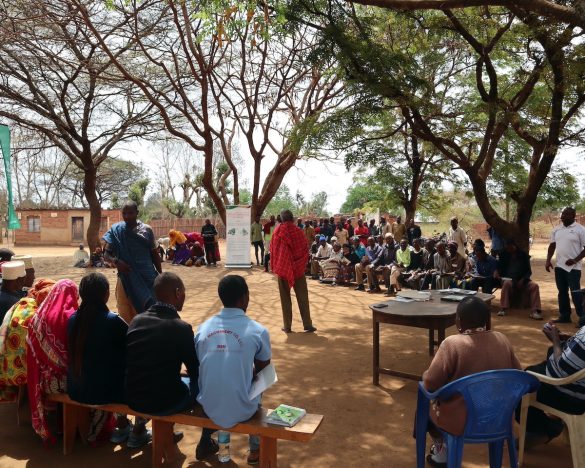Cross-regional perspectives on Africa RISING: West African scientists on progress in East and Southern Africa
During the recent East and Southern Africa review and planning meeting, team members from Africa RISING in West Africa joined the discussions. We asked Asamoah Larbi (IITA Coordinator of Africa RISING for West Africa) and Tom van Mourik (team leader for Mali at ICRISAT) to reflect on the work done by the three site teams in the East and Southern Africa region.
How does the work in East and Southern Africa compare with West Africa and what seems particularly interesting about Africa RISING in this region?
(Tom van Mourik / TvM) From a Mali perspective, there is a lot more local and national partner leadership of activities at the sites here, which is interesting as it changes the whole partnership dynamics. In Mali we have a lot of CGIAR partnerships, which has advantages and disadvantages in terms of the research and logistics. What I also see here is that the sites are more scattered and more diverse than in West Africa, spanning humid and dry sites with completely different agro-climatologies and crops. The differences are less extreme in West Africa.
(Asamoah Larbi / AL) One advantage here is the way they organize their work in work packages.
What seems challenging in East and Southern Africa?
(TvM) In West Africa we have some pre-existing knowledge on the sites and here I have the idea that some sites are more pristine and that the people are discovering the sites during this project. I don’t know if it’s linked to the process of choosing the sites; but it makes the work more challenging as there are no preexisting data and experiences with technologies to build upon.
It seems that the research framework and the process of site selection are not very well known by all research team members. Maybe they haven’t been involved in the development of the research framework. 80% of my colleagues in Mali have read at least some of the research framework.
Morever, the teams here have not been able to integrate vegetables into the whole scheme and I have the idea that they had less contact with the communities, while in Mali we had several processes of community consultation before going into the activities themselves. The Kongwa coordinator is based in Malawi and access to the site (in Tanzania) seems quite challenging from there.
(AL) In West Africa we have country teams rather than site teams. Getting a team in the country as in West Africa would be very practical.
All along we are talking about integrated market and farming systems etc. but for some of these sites the team seem to have very little knowledge about these issues.
When money goes to CGIAR centers, we are still quite remote from research sites and this partnership needs to be looked at critically to see if some external actors can lead some work more effectively on the ground.
What could you advise to the East and Southern Africa teams?
(TvM) More community involvement or at least more consultation; and really trying to find out what are the priorities in each site.
It would make sense to organize exchange visits between countries and sites to create more communication channels and exchange of experiences between site teams
(AL) The community analysis was not clearly laid out. I don’t think that you can develop a proposal in such a workshop. I think that an almost final product should be presented in such meetings, and built upon.
How useful is it for you to attend this kind of meeting in another Africa RISING region?
(AL) We found out that the socio-economic constraints apply across the board, with over-emphasis on biophysical issues. We also need to look at that. The integration is also a real issue across the teams.
It’s also good for us to come here because we need to start the work earlier this year – the rains are coming. We want to reach out to farmers and if we want to really have an impact at household level we should identify activities that complement each other.
(TvM) It is reassuring to find out that we are not the only ones struggling with the issue of integration. It allows us to recognize our weaknesses and work on them. Integration is the most difficult thing to ensure in the project but also the most important one. If we recognize that we have problems we can work on them.




